By 2024, Iran’s military-industrial complex had produced thousands of advanced drones used for surveillance, reconnaissance, and combat used against U.S. forces as well as American allies in the Middle East. The drones (unmanned aerial vehicles) have become one of the greatest assets of the Iranian-backed “Axis of Resistance”—a network of militias in Iraq, Syria, Lebanon, and Yemen—and one of the greatest dangers to Iran’s regional rivals. Among notable attacks that marked turning points in diverse Middle East conflicts:
- On Jan. 28, 2024, an Iranian-made drone attacked Tower 22, a U.S. outpost in Jordan along the Iraq and Syrian borders, that killed three American soldiers and injured more than 40.
- In January 2024, 18 Iranian-designed drones were fired by the Houthis in Yemen on ships in the Red Sea.
- In September 2019, drones and cruise missiles fired from Iran attacked Saudi Arabia’s largest oil processing facility, temporarily crippling almost half of the kingdom’s petroleum output.
Iranian-backed militias began using drones against U.S. military and diplomatic targets in Iraq and Syria in 2021. In 2021 and 2022, Iranian-designed drones were linked to at least 20 percent of attacks launched by militias linked to Tehran, according to War on the Rocks. Drone attacks on targets in Syria, Iraq and Jordan increased again after war erupted between Hamas and Israel on Oct. 7, 2023. Iran has also supplied hundreds of drones to Russia, beginning in 2022, that have been used against civilian and military targets in Ukraine. Russia established its own industry to replicate Iranian drone models.
Drones “pose the most immediate threat to Middle East security because of their low cost, widespread availability, and potential deniability—since their point of origin can be disguised by employing a convoluted flight path,” Gen. Kenneth F. McKenzie Jr., former head of U.S. Central Command, wrote in a paper for the Washington Institute. The technology has produced “an inflection point in aerial warfare—comparable to the introduction of manned flight more than a century ago—that has ended the guarantee of U.S. air superiority over its forces and bases,” he warned in February 2023.
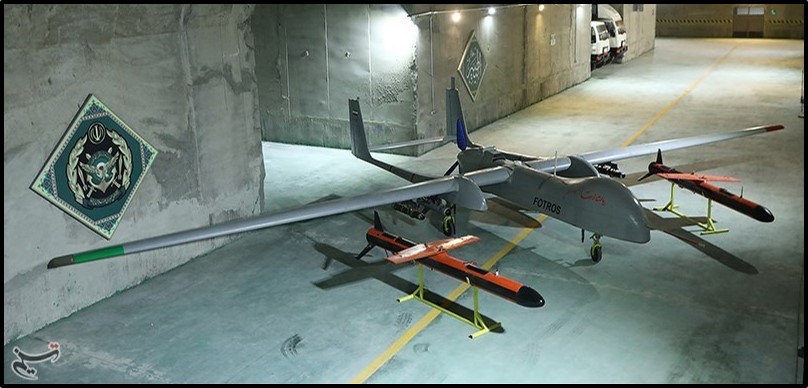
Iran’s drones have diverse capabilities:
- Suicide drones: Iran has at least 10 different models of suicide drones, which explode on impact. They can be as accurate as a ballistic missile, but they can fly lower to evade radar. Smaller models, such as the Shahed-136, carry less than 45 kilograms (100 pounds) of explosives. One of the smallest models, the Meraj-521, carries only 3 kilograms (6.6 pounds) of explosives. Many are slow and therefore easier to shoot down by anti-aircraft guns or missiles. Their ranges are as little as 5 kilometers (3 miles) or as far as 2,500 kilometers (1,550 miles). Iran’s largest suicide drones, such as the Arash series, can carry nearly 260 kilograms (575 pounds) of explosives. They have ranges of 2,000 kilometers (1,240 miles).
- Combat and surveillance drones: Iran has more than a dozen models of combat drones that can attack ground, sea or air targets and then return to base. Larger models, such as the Shahed-149, have ranges of 2,000 kilometers (1,240 miles) and can carry up to 500 kilograms (1,100 pounds) of munitions or electronic equipment.
Most of Iran’s combat drones, including long-range models, also have surveillance capabilities. Their functions range from taking photographs and video footage to marking targets for bombers, fighters or other drones. Iran also has smaller surveillance-only drones, such as the Hodhod-1, which have ranges as short as 30 kilometers (18 miles). They can only remain in the air for an hour or two at a time.
Several of Iran’s drones were modeled on captured U.S. drones, including the Predator, Reaper, Sentinel and ScanEagle 5 as well as the Israeli Hermes drone. Iran has mimicked the shapes of the UAVs but has not necessarily replicated all of the sophisticated on-board electronics. Iran has, however, succeeded in importing U.S.-made parts – almost certainly through intermediaries – for less-advanced drones, including the Shahed-136.
Since 2015, Iran has reportedly launched drones on Saudi oilfields, dissident groups in Pakistan and Iraqi Kurdistan, and jihadi groups in Syria. In 2018, the Islamic Revolutionary Guard Corps (IRGC) claimed to have conducted 700 drone strikes against ISIS targets in Syria alone. Iran has deployed armed drones beyond its borders. Tehran began exporting drone technology to Hezbollah, a Shiite militia in Lebanon, in the 2000s. In 2004, Hezbollah became the world’s first non-state actor to use military drones. And in 2006, Hezbollah – with Iran’s help – used armed drones during its 34-day war with Israel. Iran has exported drones or the technology to six other proxy militias and five governments, including Russia, Venezuela, Sudan, Ethiopia and Tajikistan. The following is a rundown of Iran’s most important drones, which are operated by both IRGC and the Artesh, or conventional military.
Ababil-2
Unveiled in 1999
Operated by the IRGC and the Artesh
Mission can be combat (including suicide) or intelligence and surveillance or training
Flight distance up to 120 kilometers (75 miles)
Weapons systems could include up to 40 kilograms (88 pounds) of explosives
Flight time is up to 2 hours
Exported in small numbers to Hezbollah in Lebanon in the 2000s, the Houthis in Yemen by 2016, and Hamas in the Gaza Strip by 2021
Variants include the Ababil-B target drone, Ababil-S reconnaissance drone, and Ababil-T strike drone
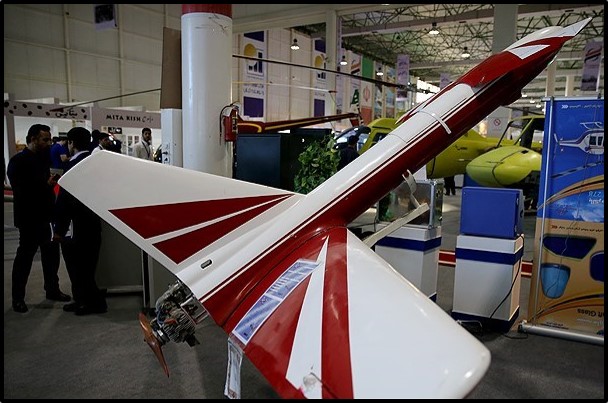
Ababil-3
Unveiled in 2010 (but reportedly produced as early as 2006 or 2008)
Operated by the IRGC and the Artesh
Mission can be either combat or intelligence and surveillance
Flight distance ranges from 100 kilometers (62 miles) to 250 kilometers (155 miles)
Weapons systems could include 2 precision-guided bombs weighing a total of 2.4 kilograms (5.3 pounds) with a range of 6 kilometers (3.7 miles) or guided anti-tank missiles with a range of 8 kilometers (5 miles)
Flight time ranges from 4 hours to 8 hours
Exported in small numbers to Sudan by 2008, militias in Iraq by 2015
Variants include the Atlas
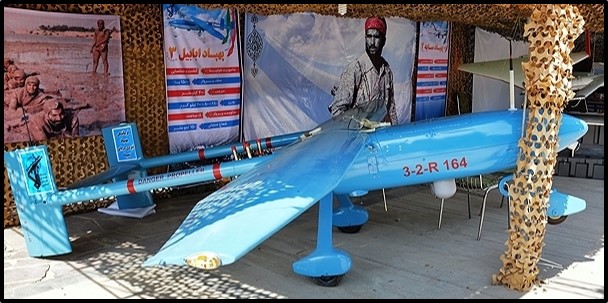
By 2022, Iran was using an Ababil-4 in military exercises but released little information about it.
Ababil-5
Unveiled in 2022
Operated by the Artesh
Mission can be combat or intelligence and surveillance
Flight distance of 480 kilometers (300 miles)
Weapons systems could include four guided anti-tank missiles with a range of 8 kilometers (5 miles) or six precision-guided bombs weighing 2.4 kilograms (5.3 pounds) with a range of 6 kilometers (3.7 miles)
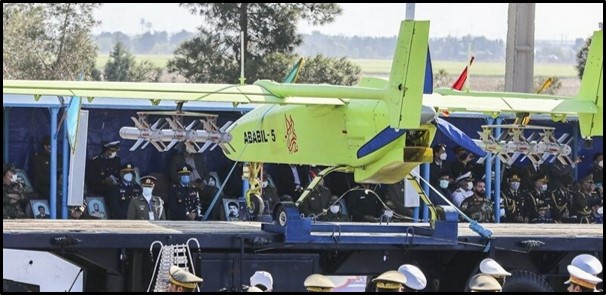
Arash
Unveiled in 2019 (a variant of the Kian)
Operated by the Artesh
Mission can be combat (suicide)
Flight distance of 2,000 kilometers (1,200 miles)
Weapons systems could include 30 kilograms (66 pounds) of explosives
Flight time is up to 8.5 hours
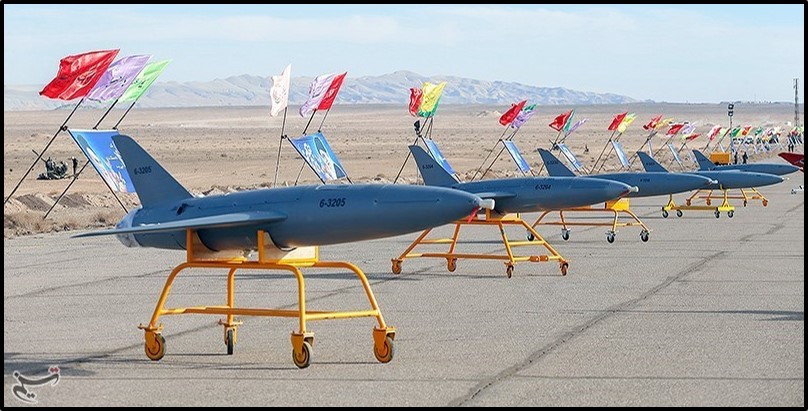
Fotros
Unveiled in 2020 (an early version or prototype was unveiled in 2013)
Operated by the IRGC
Flight distance ranges from 1,700 kilometers (1,050 miles) to 2,000 (1,240 miles)
Weapons systems could include six anti-tank missiles with a range of 10 kilometers (6.2 miles), or four anti-tank missiles and two precision-guided bombs weighing 2.4 kilograms (5.3 pounds) with a range of 6 kilometers (3.7 miles)
Flight time is up to 30 hours
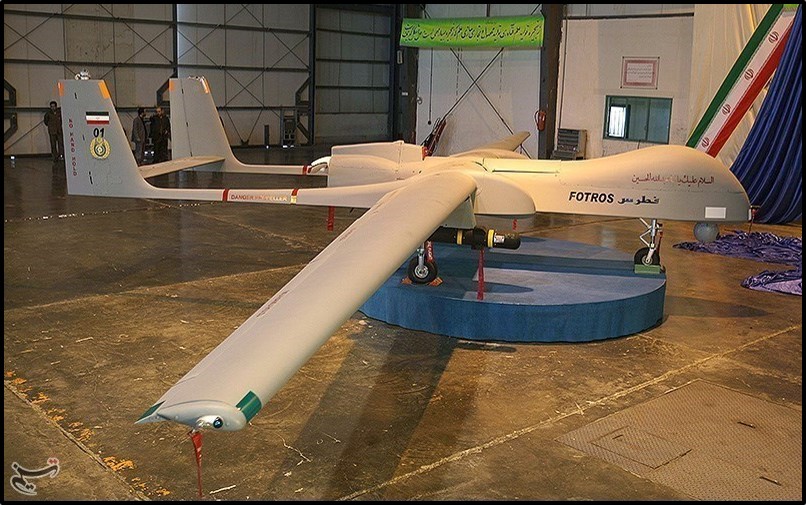
Hamaseh
Unveiled in 2013
Operated by the IRGC
Mission can be combat or intelligence and surveillance
Flight distance of 200 kilometers (125 miles)
Weapons systems could include rockets or missiles
Flight time is up to 11 hours
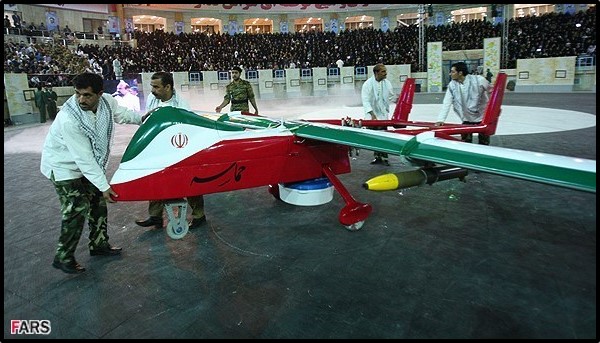
Kaman-12
Unveiled in 2019
Operated by the Artesh
Mission can be combat or intelligence and surveillance
Flight distance is 1,000 kilometers (620 miles)
Weapons systems could include missiles with a range of 30 kilometers (18 miles) or four precision-guided bombs weighing 22 kilograms (50 pounds) each
Flight time ranges from 10 hours to 12 hours
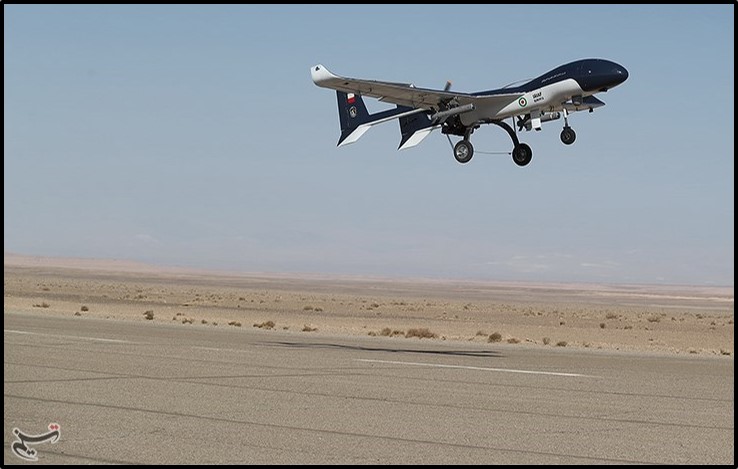
Kaman-22
Unveiled in 2021
Operated by the Artesh
Mission can be combat or intelligence and surveillance
Flight distance is up to 3,000 kilometers (1,860 miles)
Weapons systems could include four precision-guided missiles, two unguided bombs or other munitions weighing up to 300 kilograms (660 pounds)
Flight time is up to 24 hours
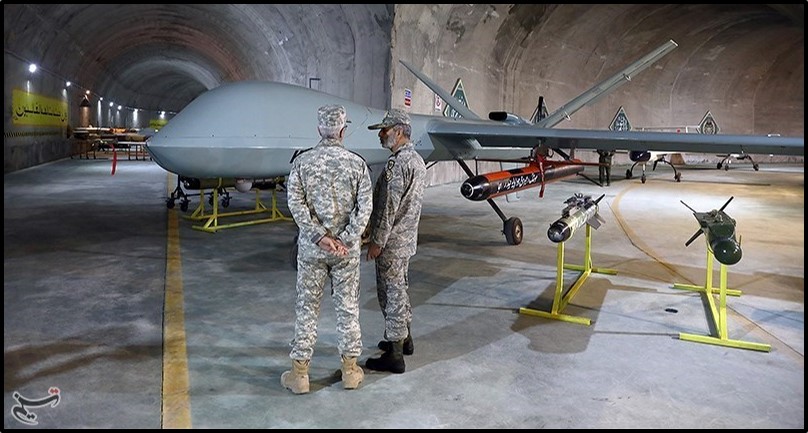
Karrar
Unveiled in 2010
Mission can be combat or intelligence and surveillance
Flight distance ranges from 700 kilometers (435 miles) to 1,000 kilometers (620 miles)
Weapons systems can include a bomb weighing 250 kilograms (550 pounds), two smaller bombs totaling the same weight, four anti-ship cruise missile with a range of 25 kilometers (15 miles), or Majid air-to-air missiles with a range of 8 kilometers (5 miles)
Flight time can be more than 2 hours
Exported in small numbers to Hezbollah in Lebanon or Syria
Variants include the Karrar 3
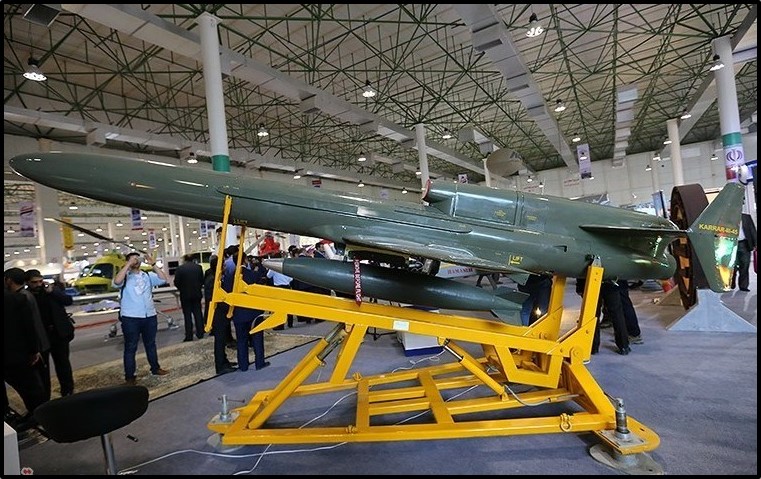
Kian
Unveiled or announced in 2015
Operated by the Artesh
Mission can be combat (including suicide) or intelligence and surveillance
Flight distance of 1,000 kilometers (620 miles)
Weapons systems can include up to 30 kilograms (66 pounds) of explosives
Variants include a reconnaissance model and a bomber model
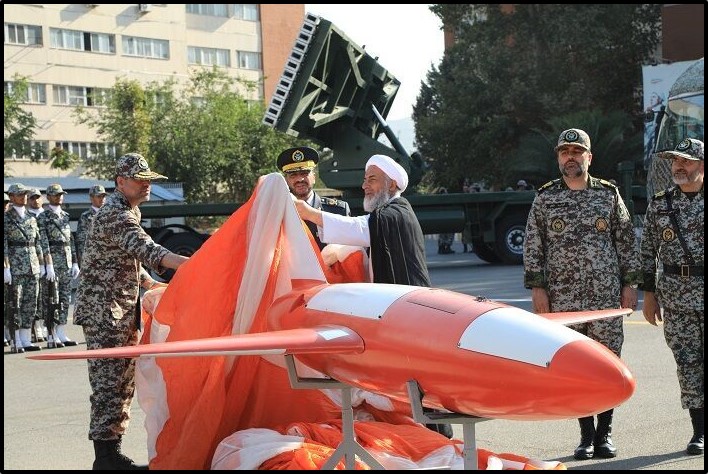
Kian-2
Unveiled in 2019
Mission can be combat or intelligence and surveillance
Flight distance 1,000 kilometers (620 miles) to 2,000 kilometers (1,240 miles)
Meraj-521
Unveiled in 2022
Operated by the IRGC
Mission can be combat (suicide)
Flight distance of 5 kilometers (3.1 miles)
Weapons systems include 3 kilograms (6.6 pounds) of explosives
Flight time is up to 15 minutes
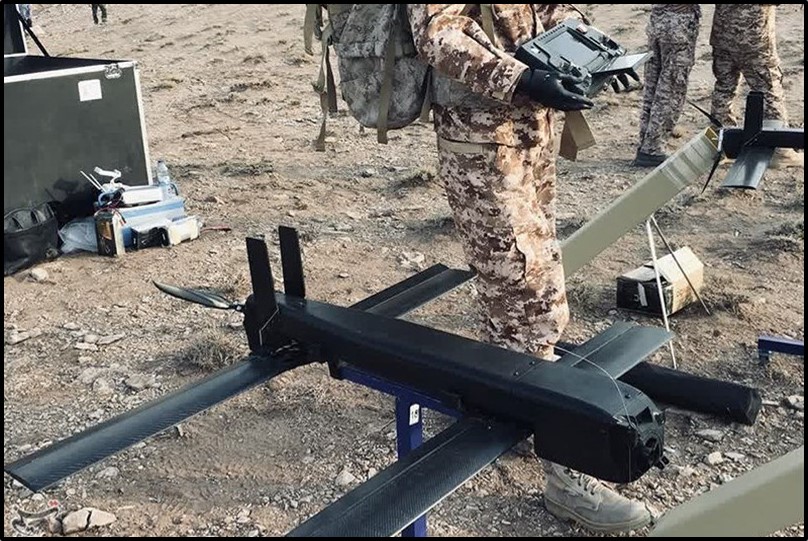
Mohajer-2
Unveiled in 1996
Operated by the IRGC and Artesh
Mission can be combat or intelligence and surveillance
Flight distance ranges from 50 kilometers (31 miles) to 150 kilometers (93 miles) depending on the variant
Weapons systems can include rocket-propelled grenades (RPGs)
Flight time ranges from 1.5 hours to 6 hours depending on the variant
Exported in small numbers to Venezuela
Variants include the N2 (introduced in 2014)
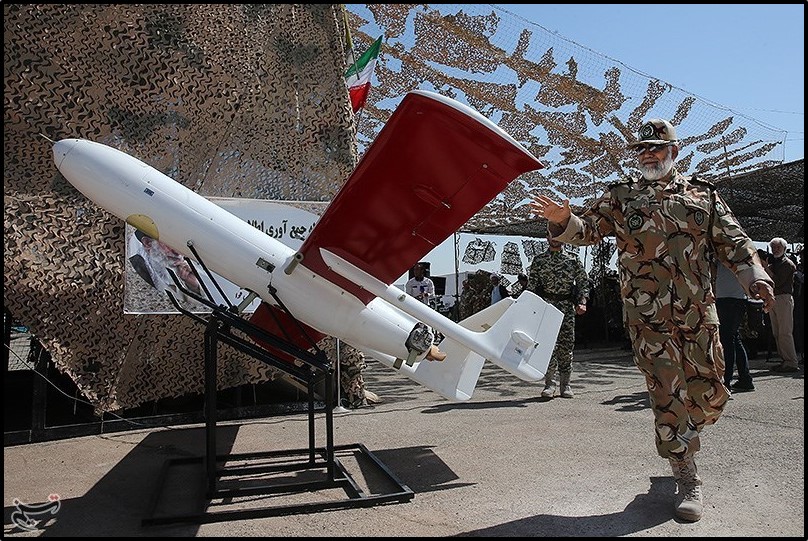
Iran unveiled the Mohajer-3, also known as the Dorna, in 1999, but did not produce it serially.
Mohajer-4
Unveiled in 1997
Operated by the IRGC and the Artesh
Mission can be combat or intelligence and surveillance
Flight distance of 150 km (90 miles)
Weapons systems can include four air-to-air missiles or unguided rockets
Flight time ranges from 3 hours up to 7 hours
Exported in small numbers to Hezbollah in Lebanon in the 2000s and to Syria
Variants include the Mohajer-4B, also known as the Saeqeh, and the Hodhod
Mohajer-6
Unveiled in 2017 but may have been produced in the early 2000s
Operated by the IRGC and the Artesh
Mission can be either combat or intelligence and surveillance
Flight distance ranges from 150 to 200 kilometers (90 to 120 miles)
Weapons systems could include two options: Short-range missiles that can hit targets at a distance of six kilometers (3.7 miles). Or precision-guided bombs weighing up to 150 kilograms (330 pounds) that can hit targets at a distance of 20 kilometers (12.4 miles).
Flight time ranges from 6 hours to 12 hours
Exported in small numbers to Venezuela and Ethiopia by 2021, an unknown number to Russia in 2022, and an unknown number to Sudan in early 2024
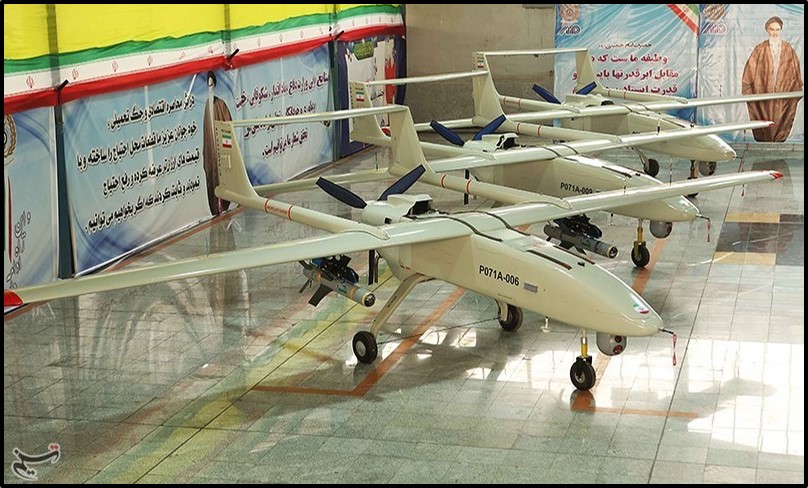
Mohajer-10
Unveiled in late August 2023
Mission can be combat or intelligence and surveillance
Flight distance reportedly able to reach Israel some 1,800 kilometers (roughly 1,100 miles) away
Weapons systems could include up to 300 kilograms (660 pounds) of explosives
Flight time is up to 24 hours
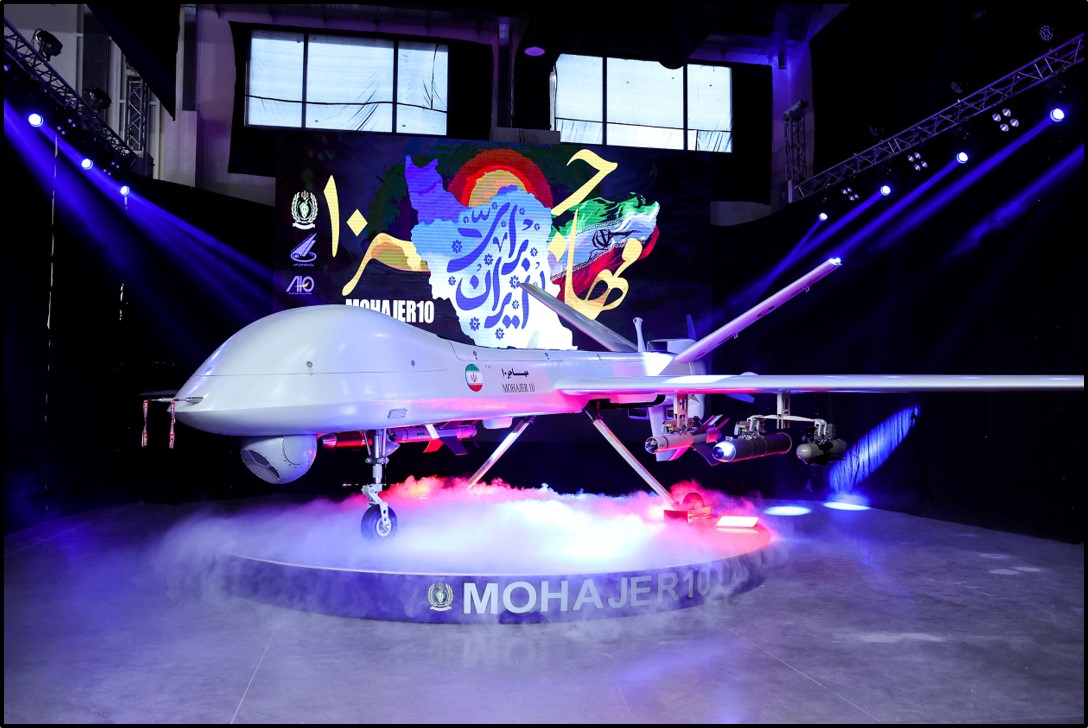
Shahed-129
Unveiled in 2012
Operated by the IRGC
Mission can be combat or intelligence and surveillance
Flight distance of 1,700 kilometers (1,050 miles) to 2,000 kilometers (1,240 miles)
Weapons systems can include at least two munitions, such as precision-guided glide bombs weighing 34 kilograms (75 pounds) each
Flight time is up to 24 hours
Exported what appeared to be a similar drone in small numbers to Hezbollah in Lebanon as early as 2012 (reportedly) or 2016
Variants or drones in the same family include a naval version, dubbed the Simorgh, the Shahed-121, and the Shahed-123, and the next-generation Shahed-139.
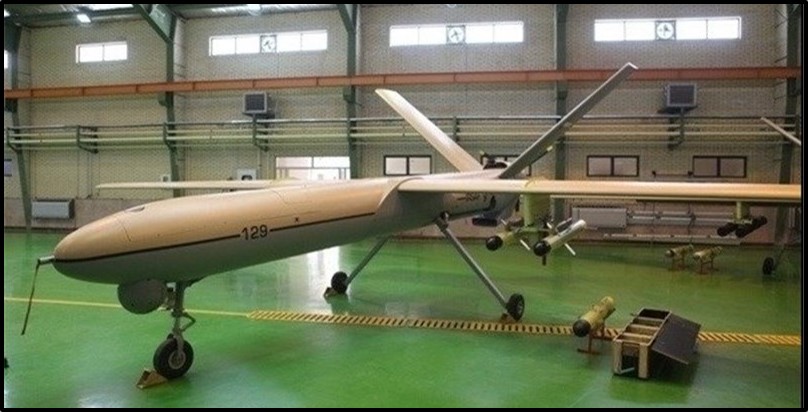
Shahed-136
Unveiled in 2021 (but may have been produced by 2019 or earlier)
Operated by the IRGC
Mission can be combat (suicide)
Flight distance estimates range from 1,300 kilometers (800 miles) up to 2,500 kilometers (1,550 miles)
Weapons systems can include a 40-kilogram (88-pound) warhead
Flight time is up to 40 minutes
Exported thousands to Russia between 2022 and early 2024
Variants include the smaller Shahed-131 and the jet-powered Shahed-238
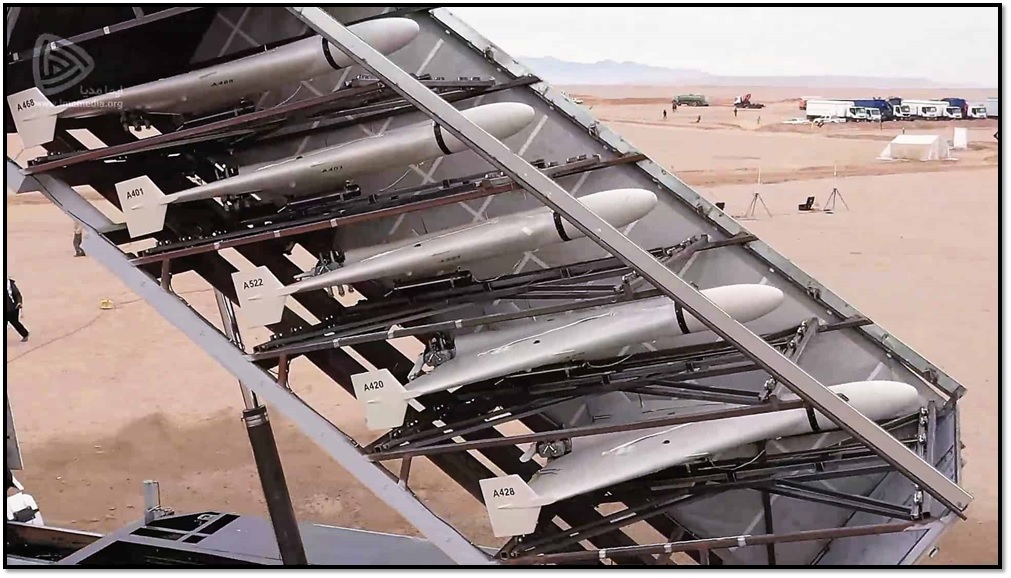
Shahed-149 Gaza
Unveiled in 2021
Operated by the IRGC
Mission can be combat or intelligence and surveillance
Flight distance up to 2,000 kilometers (1,250 miles)
Weapons systems could include up to 13 bombs or missiles weighing up to 34 kilograms (75 pounds) each
Flight time is up to 35 hours
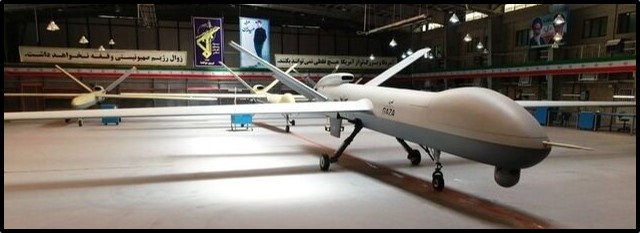
History
Iran first developed unmanned aerial vehicles (UAVs) during the 1980-1988 with Iraq, when it was unable to replace U.S.-made warplanes shot down by Iraq. Getting access to spare parts to maintain its warplanes also grew harder because of U.S. sanctions. As the war dragged on, Iran turned to UAVs as alternatives to manned aircraft.
Iran’s early models had vintage technology. Its first drone, the Mohajer-1 had only one camera—with film that had to be developed after recovery—for surveillance. Its radios to communicate with operators on the ground were comparable to a ham radio; they could be easily jammed, and thus disabled, by Iraqi forces. In the 1990s, after the war, Iran installed more sophisticated navigation systems that used GPS and higher resolution cameras that had longer ranges.
Iran developed UAVs with longer ranges that could carry bombs and missiles in the 2010s. In 2012, the new Shahed-129 could fly up to 24 hours and had a range of 1,700 kilometers (more than 1,000 miles). It was about the size of a U.S. Predator drone and had similar capabilities. Subsequent versions could carry up to eight precision-guided missiles or bombs. The Shahed-129 became the backbone of Iran’s drone fleet. In 2014, Iran reportedly deployed the Shahed-129 with its forces in Syria to use against rebels and ISIS during the civil war.
In the early 2020s, Iran developed a new generation of suicide drones with advantages over ballistic missiles that had comparable ranges. They were cheaper. One Shahed-136 reportedly cost $20,000, while a Russian Kalibre cruise missile cost $1 million. They were more portable. The Arash, about 10 feet long, could reportedly be launched from a regular car. Their parts were easier to smuggle. And suicide drones were harder to detect--either visually or by radar—than ballistic missiles. They were not as noisy. They do not produce high thermal signatures, which makes them harder than ballistic missiles to track by satellites.
But suicide drones generally have smaller payloads than ballistic missiles. The Shahed-136 can carry a warhead weighing 40 kilograms (88 pounds) about while many of Iran’s ballistic missiles carried warheads weighing more than 550 kilograms (1,212 pounds). In September 2019, Iran demonstrating pinpoint accuracy when 20 of its drones hit 14 storage tanks and three processing trains at Saudi oilfields at Abqaiq. “UAVs are Iran’s most rapidly advancing air capability,” the U.S. Defense Intelligence Agency warned in 2019.
Picture Credits: Ababil-2 via Fars News Agency CC BY 4.0; Ababil-3 via Fars News Agency CC BY 4.0; Ababil-5 via Mehr News Agency CC BY 4.0; Arash via Tasnim News CC BY 4.0; Fotros via Tasnim News CC BY 4.0; Hamaseh via Fars News Agency CC BY 4.0; Kaman-12 via Tasnim News CC BY 4.0; Kaman-22 via Tasnim News CC BY 4.0; Karrar via Tasnim News CC BY 4.0; Kian via IRNA; Meraj-521 via Tasnim News CC BY 4.0; Mohajer-2 via Tasnim News CC BY 4.0; Mohajer-6 via Tasnim News CC BY 4.0; Mohajer-10 via president.ir; Shahed-129 via Tasnim News CC BY 4.0; Shahed-136 via IMA Media;Shahed-149 Gaza via Tasnim News CC BY 4.0
